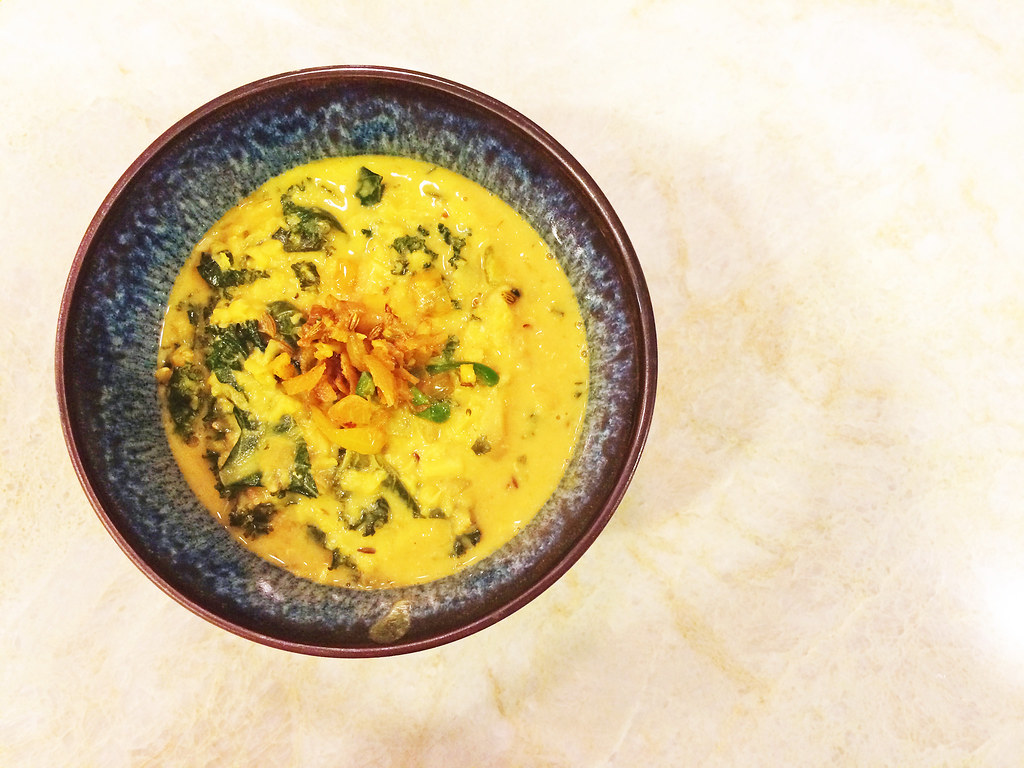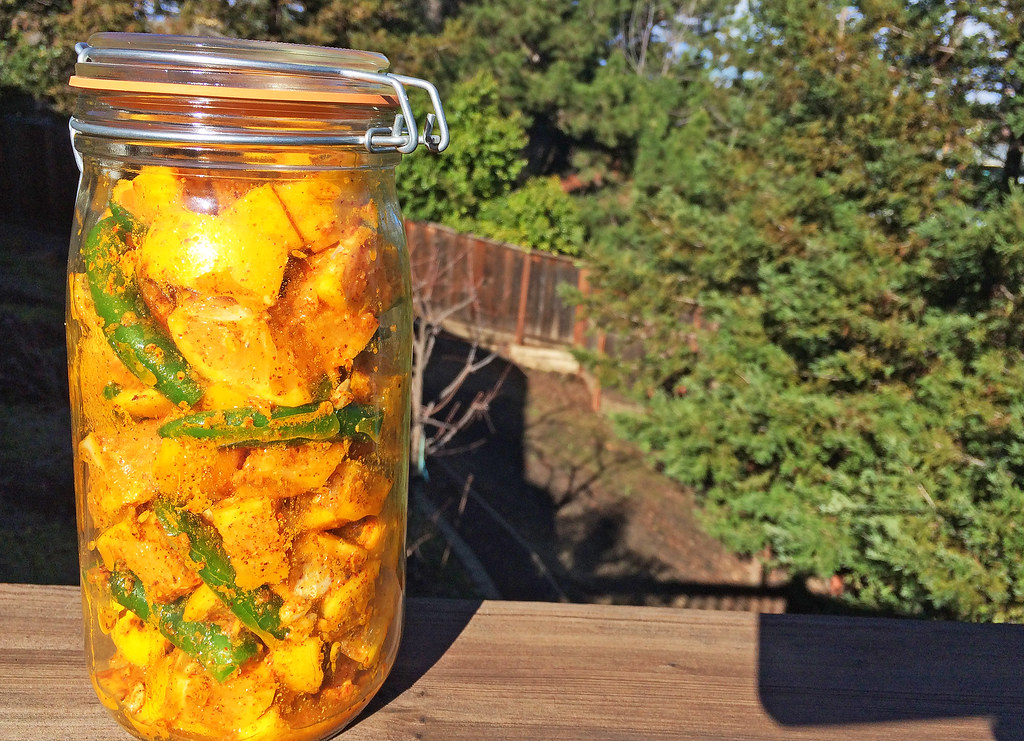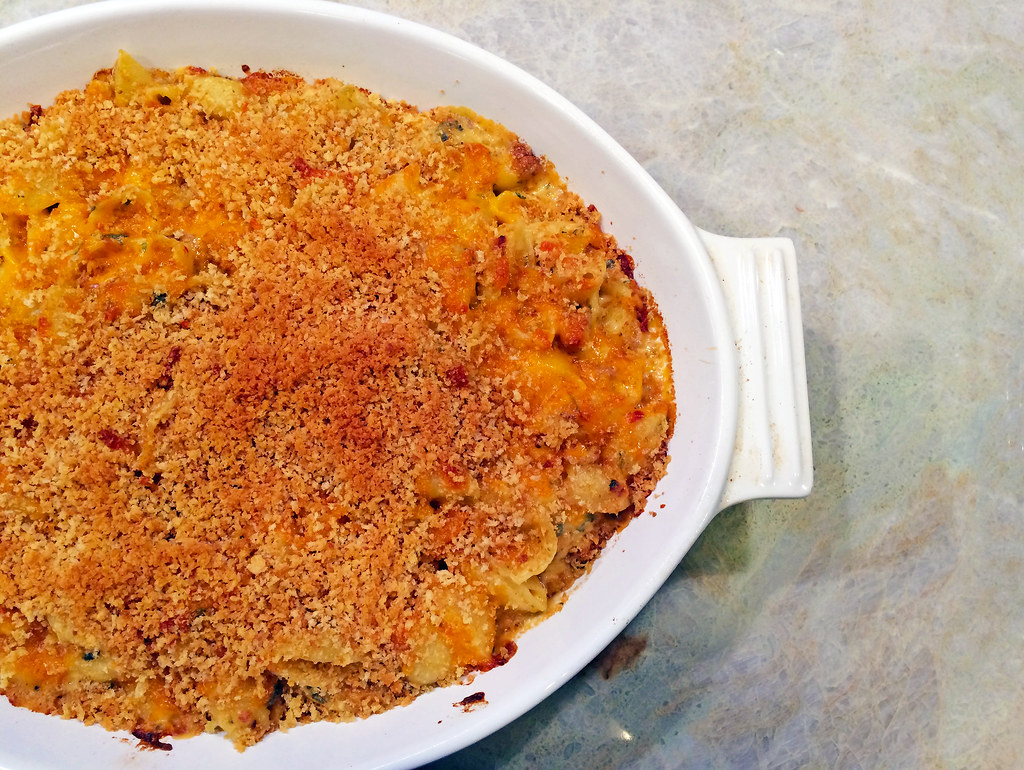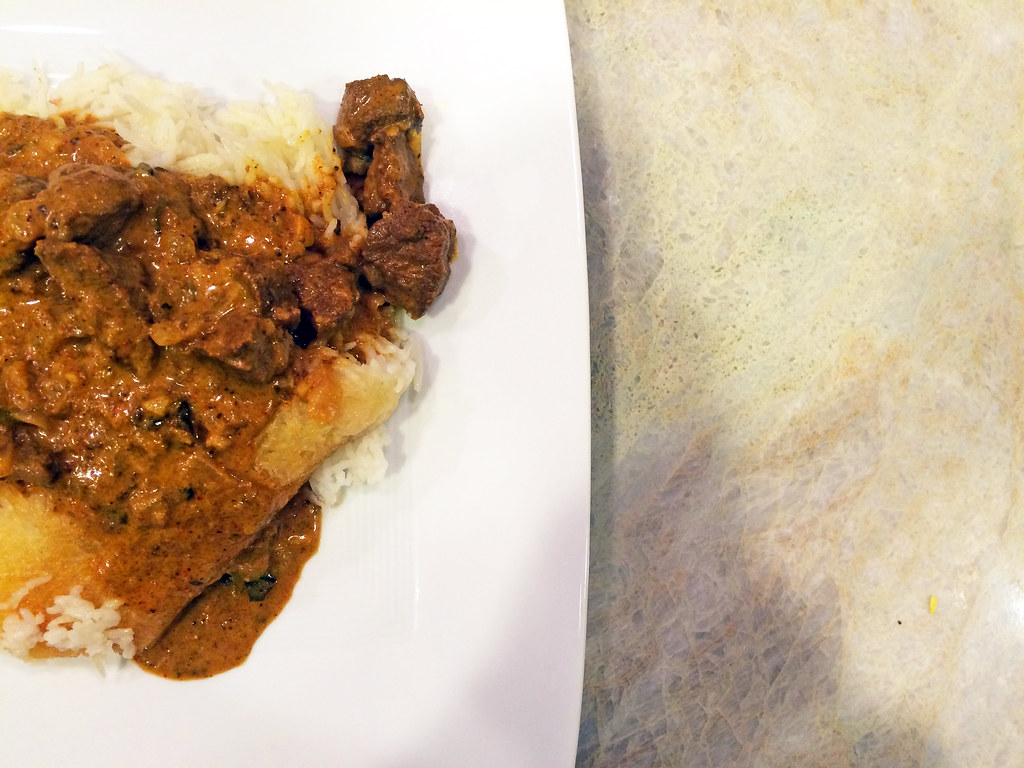This is my favorite dal recipe, and I don’t say that lightly. From Iranian adassi to Sri Lankan parippu, I’ve never met a version of dal I didn’t like, but I always come back to this one. Creamy, coconuty, and redolent with warm spices, this dal is what dreams are made of.
Make sure to use actual orange (or red) lentils here — not yellow split peas (chana dal/gheymeh). Toor dal will also work in a pinch. Split peas won’t give that velvety texture that lentils will. The chicken stock isn’t traditional, but it adds a savory layer of depth. This is alchemy in a bowl.
Ingredients:
3 tablespoons coconut oil
1 teaspoon cumin seeds
1 teaspoon fennel seeds
1 teaspoon ground turmeric
2 onions, chopped
3 garlic cloves, chopped
2 tablespoons ginger, chopped
1 green chili pepper (such as Serrano), thinly sliced
1 quart chicken stock or broth
One 14-ounce can coconut milk
2 cups orange lentils, cleaned
1 bunch kale, stemmed and leaves coarsely chopped (about 4 cups)
1 tablespoon lemon juice
Salt
Pepper
1. In a large pot, heat 1 tablespoon of the coconut oil. Add the cumin, fennel and turmeric and cook over moderate heat, stirring constantly, until fragrant, about 1 minute. Stir in the remaining 2 tablespoons of coconut oil and the onions and cook, stirring occasionally, until slightly browned, about 8 minutes. Add the garlic, ginger and chili pepper and cook, stirring, for 2 minutes. Spoon half of the spiced onion mixture into a small bowl and reserve.
2. Add the chicken stock, coconut milk, and lentils to the saucepan and bring to a simmer. Cook over moderately low heat, stirring occasionally, until the lentils are tender, about 20 minutes. Add the kale and cook until tender, about 5 minutes. Stir in the lemon juice and season with salt and pepper.
3. Spoon the dal into bowls. Top with the reserved onion mixture and serve warm.





